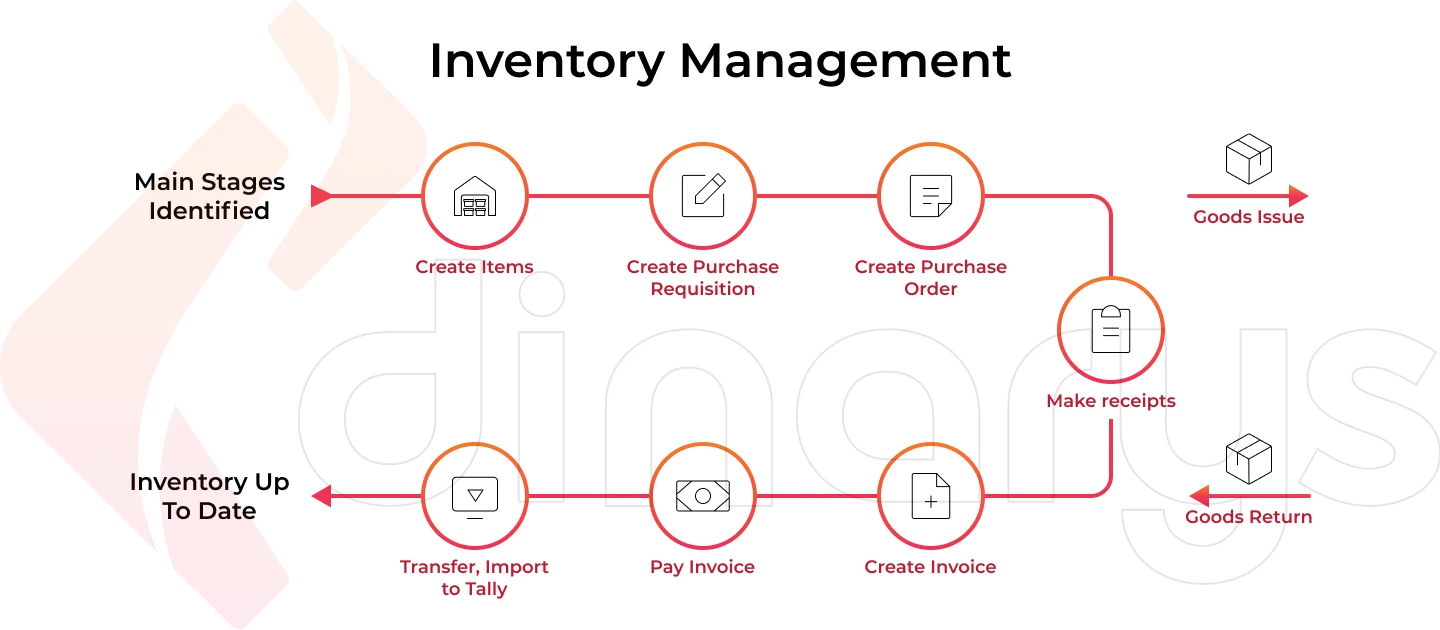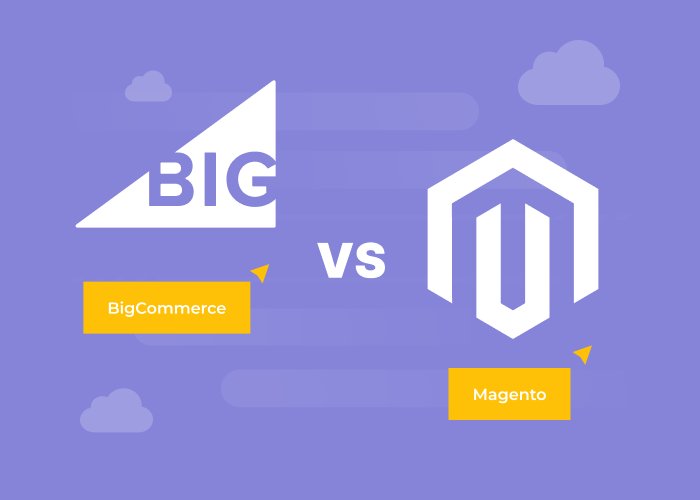Content
E-commerce Warehousing Complete Guide
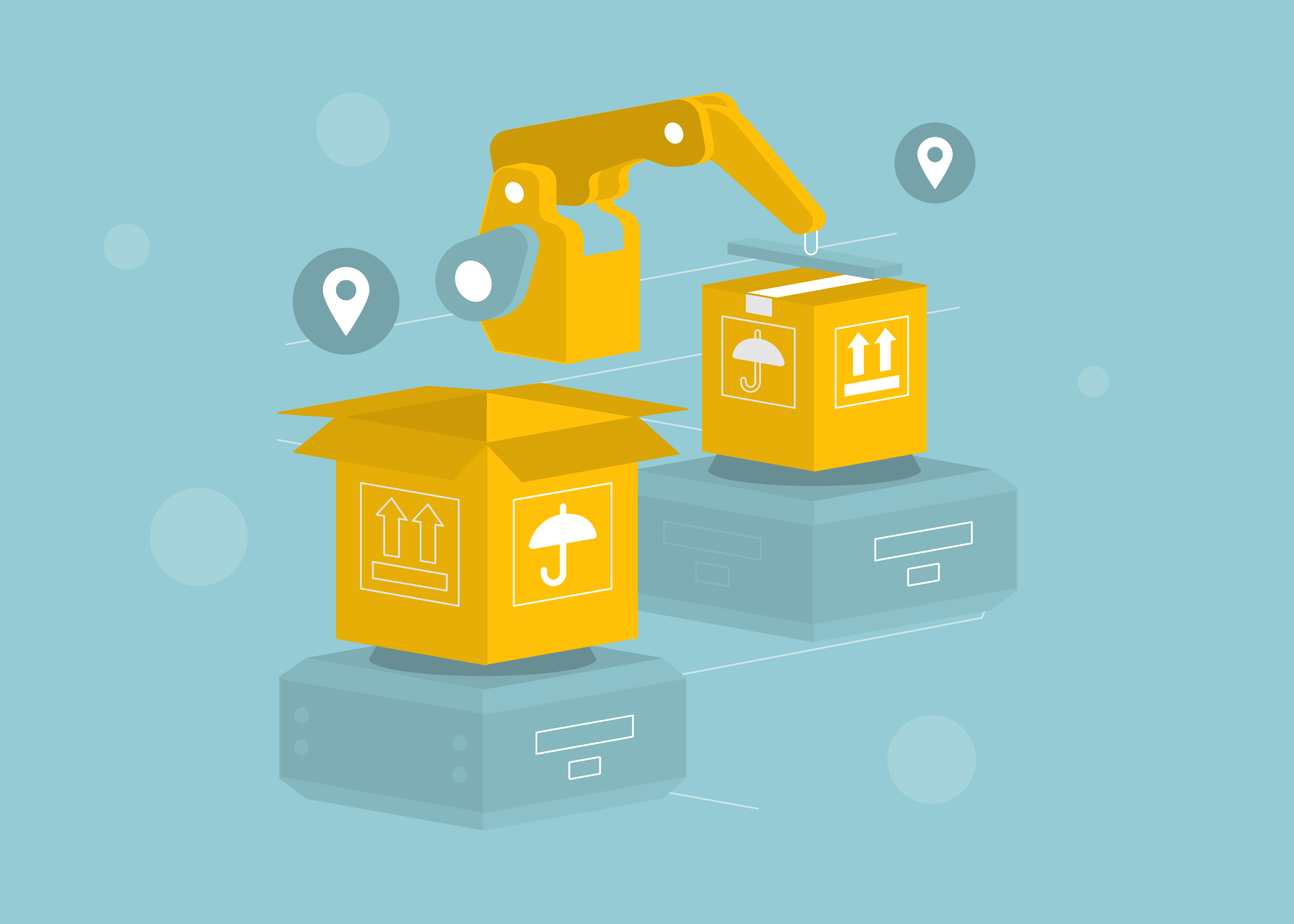
Time to read: 15 minutes
The Complete Guide to E-commerce Warehousing
E-commerce warehousing is a vital part of any e-commerce business. It allows businesses to store their products and inventory in a central location, from where it is easy to ship orders to customers. Warehouses also play an important role in e-commerce order fulfillment, ensuring that orders are processed and shipped quickly and efficiently.
A number of e-commerce warehouse management systems (WMSs) are available in the market, offering unique features and benefits. Although selecting the right WMS for your business can be a challenge, it is essential to ensure efficient e-commerce operations.
In this guide, we cover everything that you need to know about e-commerce warehousing, including the different types of e-commerce warehouses available, the key features to look for in a WMS, and ways to select the right warehouse for e-commerce companies.
What is E-commerce Warehousing?
E-commerce warehousing is the storage of physical goods before they are sold online. Warehousing includes safely and securely storing products, as well as tracking where items are located, when they arrived, how long they've been in stock, and the quantity on hand at any given time. This type of warehousing is used to fulfill orders for products bought online. The products are usually stored in a warehouse and shipped to the customer's place. E-commerce warehousing is a growing industry as more and more people nowadays buy products online.

E-commerce warehousing includes:
- Receiving products from suppliers
- Storing products in a warehouse
- Picking and packing orders
- Shipping orders to customers
- Replenishment of products
E-commerce warehouses are different from traditional warehouses because they need to be able to handle a large volume of orders. They also need to be able to ship orders quickly and efficiently. Most e-commerce warehouses use a warehouse management system (WMS) to help e-commerce business manage inventory and orders.
If you are planning to start an e-commerce business, or if you already have one, you need to have an e-commerce warehousing facility. It is an essential part of running an online business successfully.
Lets talk about itHave a project in mind?
E-commerce Warehouse Management Features
When it comes to e-commerce, warehouse management is a critical feature. E-commerce software development services can help you create a system that meets the specific needs of your business. Some of the features to consider include:
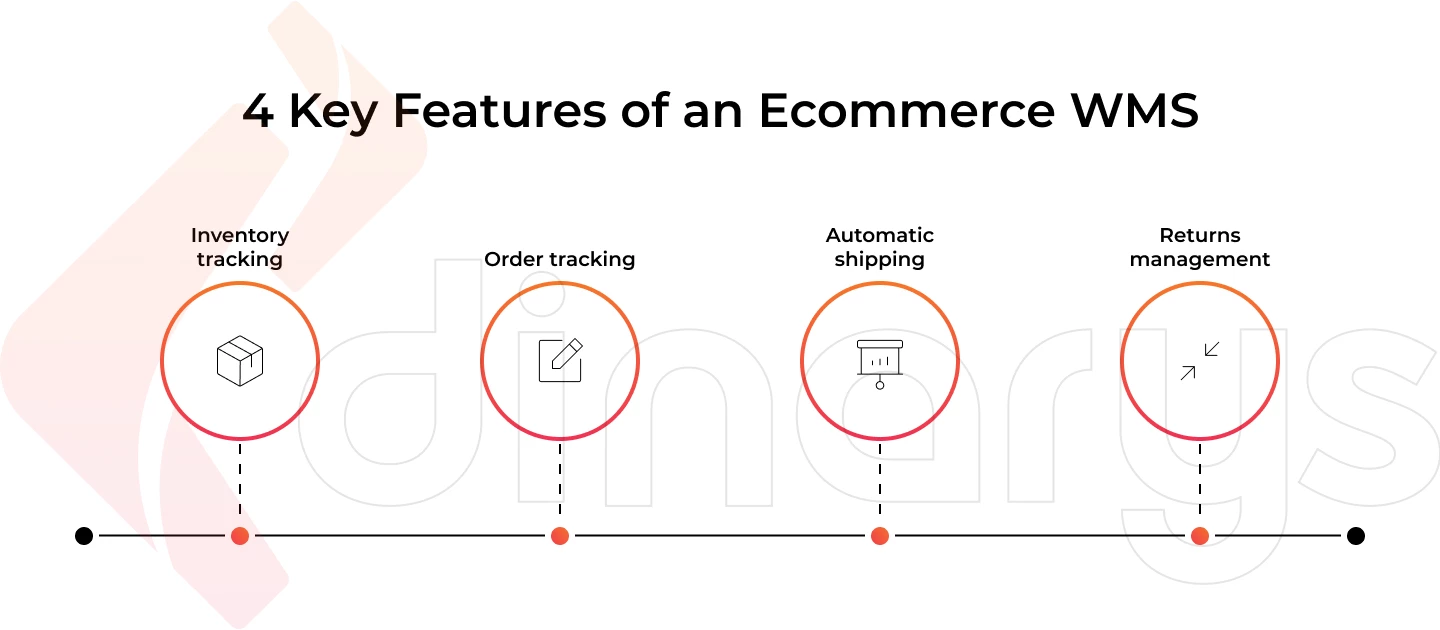
Inventory tracking: It should be able to help you track what you have in stock and how much of each item is available. This will help you ensure that you always have enough stock on hand and avoid selling out of popular items.
Order tracking: It should be able to help you track orders as they are placed and processed. This lets you see which orders are ready to ship and which ones still need work.
Automatic shipping: When orders are ready to ship, you need to automatically generate shipping labels and send the items on their way. This feature will ensure that orders are shipped promptly, besides reducing the chances of human error.
Returns management: Returns can be a hassle. However, with the right system in place, you can streamline the process. Your system should allow customers to easily initiate returns and provide instructions on handling different types of returns.
Types of E-commerce Warehouses
There are many types of e-commerce warehouses, each with its own advantages and disadvantages. Here is a quick overview of the most popular types of e-commerce warehouses:
Own E-commerce Warehouses
Own e-commerce warehouses are a type of warehouse that is used to store products that are sold online. These warehouses are typically smaller than traditional ones and are often located near major transportation hubs so that products can be shipped quickly and efficiently.
Advantages
- You have complete control over your inventory and can customize your storage to meet the specific needs of your e-commerce business.
- You can also take advantage of economies of scale and save on costs by owning your own e-commerce warehouse.
Disadvantages
- The initial investment can be costly, and you will have to spend on hiring staff to manage the warehouse.
- You may also need to invest in warehouse management software (WMS) to help you keep track of your inventory and orders.
Rented Warehouses
Rented warehouses are a warehousing facility that is typically used by businesses that need to store large quantities of inventory and couldn’t afford to posses own warehouses. These warehouses are usually located in industrial areas and leased by a third-party company. There are several reasons why companies choose to rent warehouses instead of possessing their own.
Advantages
- You can save on costs by renting a warehouse instead of owning one.
- You can have flexibility regarding the size and location of your warehouse.
- You can also choose to rent a warehouse that is already equipped with WMS, which can save you time and money.
Disadvantages
- You will not have as much control over your warehouse as you would if you owned it.
- The lease agreement may also include restrictions on how you can use the warehouse.
Lets talk about itHave a project in mind?
Distribution Centers
A distribution center is a type of warehouse that is used to store and distribute goods. Distribution centers are usually located near transportation hubs, such as airports or railroads, so they can easily ship goods to their customers. Distribution centers typically have a large space and use specialized equipment, such as conveyor belts, to move goods around the warehouse. Some distribution centers also have robots that help to move and sort goods.

Advantages
- Distribution centers are designed to efficiently store and distribute products.
- They are often located near major transportation hubs, which can save on shipping costs.
- Many distribution centers are equipped with state-of-the-art WMS, which can help you keep track of your inventory and orders.
Disadvantages
- Distribution centers can be expensive to rent or lease.
- You may also have to share the space with other e-commerce businesses, making it difficult to get the storage space you need.
Smart Warehouses
Smart warehouses are online warehousing that uses technology to track inventory, optimize picking and packing, and automate tasks. By using sensors and automation, smart warehouses can improve accuracy and efficiency while reducing labor costs.

Advantages
- Smart warehouses are equipped with advanced technology, such as sensors and robots, that can help automate your e-commerce warehouse.
- This can save you time and money on labor costs.
- The use of advanced technology can also help improve the accuracy of your inventory management.
Disadvantages
- Initial investment in a smart warehouse can be huge.
- You will also need to have trained staff to use the technology.
Government Warehouses
Government warehouses are a type of warehousing that is owned and operated by the government. These warehouses are used to store a variety of goods and materials, ranging from food and medical supplies to military equipment. Government warehouses are typically much larger than private warehouses, and they are often located in strategic locations, such as near ports or airports. Government warehouses are subject to strict security measures, and they are usually guarded by armed security personnel.
Advantages
- Government warehouses are often located near major transportation hubs, which can save shipping costs.
- They are also often equipped with WMS, which can help you keep track of your inventory and orders.
Disadvantages
- You may have to share the space with several other e-commerce businesses, which can make it difficult to get the storage space you need.
- The lease agreement may also include restrictions on how you can use the warehouse.
Drop-shipping
Drop-shipping is a type of e-commerce business model in which businesses ship products directly to customers instead of first stocking the products in a warehouse. Drop-shipping allows businesses to start selling products without investing in inventory, which can be a significant barrier to entry for many e-commerce entrepreneurs.
Advantages
- Drop-shipping allows you to outsource your e-commerce warehousing and fulfillment to a third-party provider.
- This can save you time and money on labor costs.
- It can also allow you to focus on other aspects of your e-commerce business, such as marketing and product development.
Disadvantages
- You will have less control over your inventory and fulfillment process.
- The quality of your drop-shipping provider can also affect the quality of your customer service.
There are many different ways to make money online, two of the most popular methods are drop-shipping and e-commerce. But what is better? Let's decide in our recent article.
E-commerce Warehouse Management Tips
Every e-commerce company needs a warehouse to store its inventory, but not every e-commerce company knows how to manage warehouses efficiently. An efficient e-commerce warehouse management system can save the company time and money.
There are a few e-commerce warehouse management tips that every e-commerce company should follow:
Use a WMS
A warehouse management system (WMS) is software that helps e-commerce companies manage their inventory. It can track inventory levels, orders, and shipments. A WMS can also help e-commerce companies plan their warehouse space and layout. This can save companies time and money so that they can focus on their e-commerce business. WMS e-commerce software can be expensive, but it is worth the investment for e-commerce companies.
Integrate Your WMS With an E-commerce Platform
Integrating your WMS with your e-commerce platform can save you time and money. When your WMS is integrated with your e-commerce platform, you can automate your inventory management. This means that you can save time by not having to update your inventory levels manually. This also means that you can avoid practices that can prove costly for your e-commerce business. What’s more, an integrated WMS can help you improve your customer service. This, in turn, can lead to more sales and repeat customers.
Read more about Magento shipping integration in our blog.
Effective Inventory Management
Effective inventory management is crucial for e-commerce companies. Overstocking your inventory can tie up capital that could be used elsewhere in your e-commerce business. On the other hand, if you don’t have enough inventory, you may lose sales. A good way to manage your inventory is to use a “just-in-time” inventory system. This system ensures that you have the inventory you need when you need it. This can help you save money and avoid lost sales.
Order tracking
It’s important to track your orders so that you can quickly and efficiently fulfill them. A good way to do this is to use a barcode system. This system can help you keep track of your inventory and orders. It can also help you fulfill orders more quickly.
Lets talk about itHave a project in mind?
Benefits of E-commerce Warehousing
Every e-commerce company, no matter how big or small needs a good warehousing and shipping solution to keep its business running smoothly. An e-commerce warehouse is a storage facility in which inventory for an online store is kept. E-commerce warehouses are different from traditional retail warehouses in that they need to be able to manage smaller, more frequent orders. They also need to be able to integrate with e-commerce platforms and shipping carriers. There are many benefits of e-commerce warehousing, including the following:
Efficient Order Fulfillment
A good e-commerce warehouse management system (WMS) will help you pick, pack, and ship orders quickly and accurately. This is important for keeping customers happy and reducing shipping costs.
Improved Inventory Management
A WMS can help you keep track of your inventory levels and locations, so you can make sure you always have the products your customers want in stock. This can help reduce stockouts and improve customer satisfaction.
Flexible Shipping Options
E-commerce warehouses give you the ability to offer a variety of shipping options to your customers, including expedited shipping and free shipping. This can help you attract and retain customers.
Reduced Operating Costs
A well-run e-commerce warehouse can help you save money on labor, rent, and other operating costs.
Increased Sales
By making it easy for customers to find and buy the products they want, e-commerce warehouses can help you increase sales and grow your business.
Are you looking for ways to improve your warehouse efficiency? If so, then you should consider implementing key performance indicators (KPIs). Read about the different types of Warehouse KPIs in our article.
How to Choose the Right WMS
As e-commerce continues to grow, the need for efficient warehouse management systems (WMS) becomes more important. The right WMS can help e-commerce businesses save time and money by optimizing their operations. But with so many options in the market, how do you choose the right one for your business?
Here are a few things to keep in mind when choosing a WMS for your e-commerce business:
1) Understand What Makes WMS Beneficial
Small and medium businesses that are looking to expand need robust warehouse management systems. WMS becomes more beneficial as businesses scale and need to handle multiple processes seamlessly. WMS provides visibility into inventory, storage capabilities, product/material expiration dates, sales, and customer service. With an appropriate WMS in place, businesses can easily analyze changes in their current processes, examine shipments, and check the volume of orders.
2) Know Your Requirements and ROI
Supply chain vendors should take the time to define all of their requirements and enlist the costs associated with these requirements to accurately calculate the return on investment for a WMS. In this way, even when choosing specific vendors, project managers can easily estimate when the ROI will turn positive. Though different WMSs have various features, such as customer service, logistic management, and inventory tracking, it is extremely important to select one that meets your organization’s requirements.
Budget constraints also apply at this point, with the least expensive Tier-3 WMS (Basic) providing essential tracking features, such as ordering, packing, shipping, and receiving. A higher-level Tier-2 system (Intermediate) can come with extra options, such as restocking, work directing, optimization, and minimum reporting. Tier-1 solutions WMS (Advanced) offers complete sophisticated order flow controls and strong response time irrespective of transaction volumes, forecasting capacities, and allocation of labor. These systems also provide advanced levels of reporting, such as the status of the warehouse floor, among others.
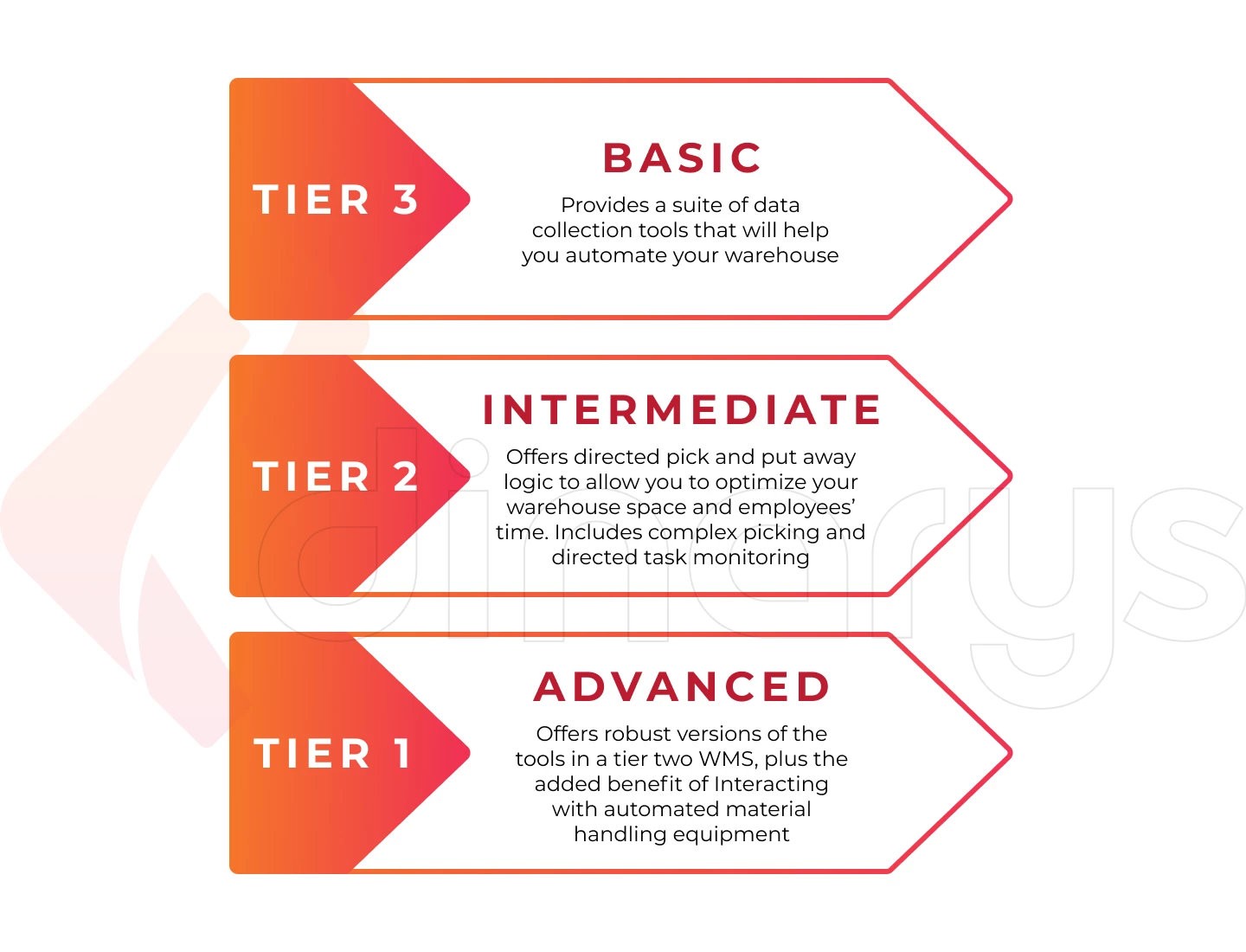
3) Shortlist the Best Vendors
It is important to find vendors who are committed, reliable, and robust in maintaining a cognitive relationship. This, along with the need to meet your specific requirements, is a key factor in narrowing down your top 5-10 vendors.
Differentiating factors, such as cost, know-how, development, and quality, should be considered when making your decision. A vendor offering a WMS that can identify actions specifically to address challenges and look into details on a line-by-line basis is more likely to provide the optimal solution from the start. An ideal WMS should be able to scale up as the organization grows, providing solutions as and when required in a timely manner.
A good approach to identify the best WMS is to view a demo of the software and understand the various features that it supports. This will give your business an opportunity to analyze the real-time data, test various functions, check for failures or areas that do not meet your requirements, incorporate required integrations, and work with the vendor to get things customized as and when needed.
Summary
E-commerce warehousing is a vital part of running a successful online store. By understanding the different types of e-commerce warehouses and ways to manage them effectively, you can ensure that your business has the storage and shipping capabilities it needs to thrive. With the right e-commerce warehouse in place, you can streamline your operations, improve your customer service, and boost your profits.
However, e-commerce warehousing can be a complex and daunting task for even the most experienced e-commerce storeowners. Luckily, there are a good number of warehouse e-commerce management services available that can take care of all your special needs.
Dinarys is the company you can trust in e-commerce warehousing, from shipping and receiving to inventory management and more. Contact us today for a free consultation, and let us show you how we can help take your e-commerce business to the next level.
Let professionals meet your challenge
Our certified specialists will find the most optimal solution for your business.


